Top Electric Standing Desk Converters
- Lab tested
Like most reviews sites, our editorial staff and laboratory testing expenses are partially offset by earning small commissions (at no cost to you) when you purchase something through those links. Learn More

We’ve reached a major inflection point in the market for electric standing desk converters, with prices on some new units actually meeting the price of hand-operated converters (e.g. see our top pick below). You can now find a wide assortment of converters under $350, including electrics as inexpensive as $249. Just a couple of years ago, the least expensive electric standing desk converter would have run you $900, so this is truly a momentous improvement in cost-engineering and volume economics.
Just as electric windows quickly replaced crank windows in cars, we expect the same to happen in the world of standing desk converters. It’s really just a rinse-and-repeat of what happened with full-sized sit-stand desks over the past few years – where the market share of crank desks has dropped to less than 2% of all sit-stand desks being sold today – inevitable when prices between manual and electric start to equate.
Why should you consider an electric standing desk converter?
1. Heavy Weight Capacity
More and more people are using two or more monitors these days, and many are using all-in-one PCs (e.g. the iMac) or large panoramic displays. After years of seeing LCD monitors get lighter and lighter, the average user’s desktop monitor heft has started to increase again. Add the weight of ergonomic monitor arms that bring your screens to the proper height when switching between sitting and standing, and the overall effect is only increased. (When we stand our lower spines stretch out, making the distance between keyboard and monitors greater and necessitating an ergonomic arm to eliminate strain from neck craning.)
So if you’re one of those heavy-duty users already, or you think you might eventually switch to more and/or larger monitors, you should certainly consider electric. Electric models generally have better weight capacity than other types of standing desk converters.
2. Easy & Effortless Adjustment
The other classic criteria for choosing an electric standing desk converter is when you’re prone to suffering from low back pain. Some manual converters, notoriously the Varidesk units (and their many Chinese copycat competitors) force the user to lean over to lift the work surface to standing height. With an electric unit, there’s no leaning over to assist the lift. Compared to some post & base converters, there’s also no holding up your monitors while you adjust their height position relative to the work surface – a serious problem for many people with shoulder issues. So if you have any of these ergonomic concerns, electric is now a very practical choice—and one that no longer has to break the bank.
Most of the electrics come with options for multiple monitors, but not all do, so you’ll want to be sure your model comes with an easy way to adjust your monitor height when you stand. We’ll cover all this and more in the detailed lab-test reviews you can click over to from the abstract summaries below.
Who shouldn’t consider an electric standing desk converter? Given the recent move to price parity with manual units, the only situation in which electric can be disqualified is when there’s no power outlet conveniently located near the desk. We dare say that’ll be less than 1% of users’ situations, less if you can obtain a long extension cord to solve the problem.
Best Electric Stand Desk Converters
1. Winston-E Standing Desk Converter
Pros: Polished, refined aesthetic, electric lift mechanism with programmable positioning for sitting and standing, innovative monitor focal depth adjustment for superior ergonomics and screen-sharing, stable work surface for typing, models available for 1, 2, or 3 monitors
Cons: It has a price tag to match its state-of-the-art capabilities
Bottom Line: For the executive with a budget for office décor, the Winston-E offers an unparalleled combination of style, ergonomics, and stability. It’s a “Made in America” product with a classy design. And it’s the first free-standing desktop riser we’ve seen to boast monitor focal depth adjustment—a concept patented by the manufacturer—which gives you another dimension for positioning your monitor(s) ergonomically. Highly recommended for those who make it a policy not to settle for second-best.
Price: $968
2. Mount-It! Electric Standing Desk converter
Pros: It’s cheap but some of its specs match much pricier converters. It has a generous work surface while still fitting on a 24”-deep desk. Electric lift means it can haul a decent amount of weight and you don’t have to put your lower back muscles into lifting it. A 10-year warranty is really great in this category. It raises straight up like an X-lift converter, with no forward-arcing motion like Z-lift converters (e.g. Varidesks) are prone to have.
Cons: There’s some springiness in the frame when you push down on the keyboard tray; it is not as rigid as the top-rated standing desk converters that we’ve tested in similar lab conditions. When the keyboard tray is lowered, metal screwheads are the point of contact with the desk, which will likely cause damage over time. Not all monitor arms will be compatible with the design of this unit, so you’ll have to shop carefully for one that’ll work within its constraints.
Bottom Line: Solid all around, the Mount-It! Electric Standing Desk Converter is a very good value. It has the performance specs to line up with much pricier converters and only a couple of issues hold it back from garnering a top-tier rating. While we’d like to see Mount-It! improve on these deficiencies, for the price one really cannot complain about them.
Price: $349
3. Ergo Desktop Electric Kangaroo Standing Desk Converter
Pros: With the same DNA as other Kangaroo products, the Electric Kangaroo has a wide range of adjustability, and an independently-adjustable monitor mount. Monitor tilt, pan, and rotation are all easily adjustable, and the included stabilization leg prevents distracting worksurface shaking. 150lbs lift capacity is far and away the strongest among risers.
Cons: The Kangaroo is a bit less pretty that some other, less-performing desktop risers, with its ‘form follows function’ design philosophy.
Bottom Line: The Kangaroo might not be the most gorgeous thing you’ll put on your desk, but it does get the job done. It’s equipped with the same 24”x28” worksurface as the older Kangaroo models with plenty of space for keyboards, mice, and more. Unlike the One-Touch line of risers, there is currently no option for a drop-down keyboard tray, but if you’re willing to live with that you’ll find the Kangaroo a roomy experience.
Price: $699
4. Ergotech One-touch Standing Desk Converter
Pros: Can accommodate up to four monitors, 100 lb weight capacity, easy one-touch electric height adjustment is quiet and smooth
Cons: Monitors are somewhat difficult to tilt/pan/rotate, aesthetic is a little bit industrial, with motor and cords exposed
Bottom Line: Ergotech’s new desktop riser, the One-Touch Free Stand, represents a step in the right direction for electric-powered risers. Its main competitor, the tankish Taskmate Executive, seems like an anachronistic behemoth next to the comparably sleek and customizable new riser.
Price: $1,069
5. TaskMate Executive Standing Desk Converter
Pros: Comes with two tablet/document holders, adjustable keyboard tray for better typing ergonomics
Cons: All metal, quasi-military look isn’t going to win any beauty contests, assembly is difficult
Bottom Line: One small rise for HealthPostures, one giant leap in riser design. The Taskmate Executive riser is the first entrant into what we hope will become a much more populous category. A satisfyingly “clicky” switch and a highly responsive electric motor don’t disappoint – the Executive is downright enjoyable to adjust. While it is an expensive option, and requires some tricky assembly, we’re extremely pleased with our first electric desktop riser.
Price: $850
6. Versadesk Power Pro Corner Standing Desk Converter
Pros: Deep work surface (7” deeper than Versadesk Power Pro Plus), stable, easy to adjust due to electric motor, competitive price, huge 80 lb. weight capacity
Cons: Cheap “lunch table” surfaces, noisy motor, slow transit speed, build quality concerns
Bottom Line: Like its relative, the Versadesk Power Pro, the Power Pro Corner looks good from a glance at the specs but has issues that detract from the overall impression. Particleboard construction and high-pressure laminate surfaces aren’t associated with lifetime quality guarantee, and the pinch points leave us concerned. The transit speed is quite slow. On the plus side, there are five colors available. The corner model also features a 7” deeper work surface than the Power Pro.
Price: $495
7. UpLiftDesk E7 Standing Desk Converter
Pros: Impressive-sounding weight capacity of up to 110 lbs. Easy to adjust with electronic presets for sitting and standing positions. Can accommodate even the tallest of likely users.
Cons: No way to practically adjust height of monitor(s) relative to keyboard height. Keyboard tray bounces and lacks tilt or depth adjustment. Monitor options are fairly limited due to weight and width constraints.
Bottom Line: The E7 features smooth movement, a slick height adjustment keypad, and an impressive weight capacity. However, it lacks some basic flexibility in adjusting for different positions and requires some significant assembly of very heavy parts (the unit weights 92 lbs – get a friend to help). While its features make it a consideration, the limitations hold it back from being the best in this price range. There are better electric sit-stand converters for less money.
Price: $449
8. Versadesk Power Pro Standing Desk Converter
Pros: Variety of colors and finishes, four monitor pole support
Cons: Abrupt stopping motion may cause converter to drop on top of the table, Keyboard tray depth is shallow
Bottom Line: The Versadesk Power Pro looks good from a glance at the specs, but has some issues that detract from the overall impression. Particleboard construction and high-pressure laminate surfaces aren’t associated with lifetime quality guarantee, and the instability in the build and pinch points leave us seriously concerned. To top it all off, the transit speed is quite slow. On the plus side, there are four sizes and five colors available.
Price: $370
9. VIVO Electric Corner Standing Desk Converter
Pros: Inexpensive price point, relatively sturdy look and feel, work surface easily holds two 27” monitors, tilting keyboard tray for better typing ergonomics, usb charging port, easy electric height adjustment, convenient accessory slot
Cons: Very small keyboard tray makes mouse work difficult, lots of potential pinch points in frame, lingering questions about quality due to VIVO’s reputation
Bottom Line: Concerns include product length of life, enough space for mouse work, and too many pinch points. Worth checking out higher quality, slightly more expensive electric alternatives.
Price: $ 229.99
10. FlexiSpot Motorized Aesthetic Sit-Stand Workstation EM6M
An interesting and sleek design paired with neat features like customizable setup with extra surface or storage, wireless charging, and holes for monitor mounts might make you wonder why it is only a middle-priced standing desk converter. While claiming to be “crafted by top U.S. designers,” this unit is manufactured in China, and likely to the same quality standards as the many Flexispot standing desks that we’ve lab reviewed in the past (not the brand’s strong suit). What concerns us the most at first look – as we haven’t yet received the unit for lab testing – is potential durability issue. Particularly with what appears might be an underpowered motor for the type of lifting mechanism employed.
Price: $399.99
11. Leband Electric Standing Desk Converter
Pros: It’s the cheapest electric standing desk converter we’ve ever tested. It adjusts with the push of a button and lifts straight up. There’s a thoughtful child lock feature and height memory preset. It looks nice and is light enough to move around. The built-in wireless charging pad is a handy feature.
Cons: Due to the fact that the minimum seated working height with this product is 2.75” higher than your desk, the lack of a descending keyboard tray, and incompatibility with ergonomic monitor arms, we can’t recommend typing on this converter for any length of time. Its thin metal frame is too flexible to provide any sort of rigid structure to this desktop converter. The motor is weak and very slow. But it shouldn’t even be called a sit-stand converter because it’s flatly unusable in the seated position for many users.
Bottom Line: The Leband Electric Standing Desk Converter is likely your cheapest entry point for an electric converter and has some interesting features. Unfortunately, design flaws in its frame, motor and ergonomics make it a weak entry in this category. To be blunt, it’s not really a “standing desk converter” at all for many users. The best thing that could be said for it is that it will convert a fixed-height desk to an adjustable-height desk usable only for standing, but even at that, not a very ergonomic or stable one. Most users would need to entirely remove it from your desk to be able to work in a seated posture.
Price: $199.99
Discontinued Standing Desk Converters
At WorkWhileWalking we’ve been lab testing and writing reviews of ergonomic office furniture and accessories for over a decade. In that time, we have seen many of the products we reviewed fall by the wayside. This is inevitable due to the cycle of continuous improvement, with new models supplanting their predecessors. Of course in some cases products weren’t as competitive as they needed to be, or their manufacturers ran into financial challenges (which very much accelerated as a result of the post-pandemic economy).
For whatever reason, these products now fall into the discontinued category, but we will still keep their reviews published and available to read. Whether you want to know more about the desk, monitor arm, etc. that you bought years ago, need more info because someone is selling one second hand, or just want to compare current offerings with what was available in the past, these reviews will remain here for your reference.
1. Eureka 31.5" Electric Sit-Stand Converter
This is unprecedented price territory for a quality electric standing desk converter. We’ve seen $299 before (like the Autonomous SmartDesk Mini) but they pale in comparison in technology, structural stability, quality of components, durability and overall value. This new unit is bound to dethrone the Varidesk Electric.
Price: $ 299
2. Autonomous SmartDesk Mini Desktop Workstation
A first leap into the realm of budget electric standing desk converters ends in an underwhelming performance, but we expect more of these low-cost options to arrive on the market soon. Our advice? Stay tuned for better budget options or opt now for a manual design.
Price: $299
For all our sit-stand desk converter reviews, see our sit-stand converter comparison review page.
Top 3 Factors to Consider When Buying an Electric Stand Desk Converter
Keep these points in mind as you’re comparing Electric converter models.
Do You Use Dual Monitors?
If you do, you’ll have to pay extra for a model that accommodates multiple monitors. The Winston-E holds up to 3 monitors, and the Kangaroo Electric holds up to 2 monitors. Some models do not accommodate dual monitors at all, like the Autonomous SmartDesk Mini.
How Noisy is the Unit?
Noise is a factor you should keep in mind when comparing electric standing desk converters. They don’t make any noise when they latch into place (like many Z-Lifts and X-Lifts) but they do make a quiet hum with their motors. In some cases, it may be enough to irritate your coworkers.
Is it Ergonomically-sound?
Most Electric standing desk converters use the fundamental design of a Post & Base model. This means they have a built-in monitor pole to keep your monitors at an ergonomically sound viewing position. However, making subtle adjustments to your monitors is another story; some models make tilting, panning, rotating, and changing the focal depth of your monitors much easier than others.
If you want more items to consider when purchasing a sit-stand desk converter, see our article Top 8 Factors to Consider When Buying a Standing Desk Converter.
And to make sure you’re getting the most out of your converter, check out the iMovR Tucker Pro Cable Management Kit for standing desk converters. It’s the first kit on the market designed specifically for standing desk converters.
Looking For More Standing Desk Converter Reviews?
• Overall Best Standing Desk Converters
• Best Standing Desk Converters Under $ 350
• Best X-Lift Standing Desk Converters
• Best Z-Lift Standing Desk Converters
• Best Post-And-Base Standing Desk Converters


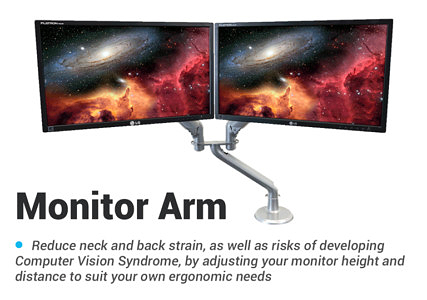
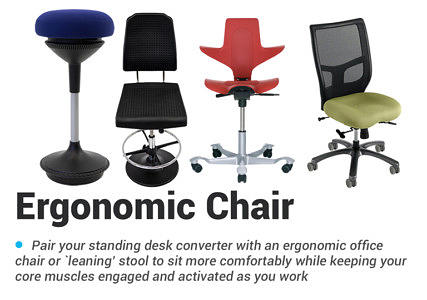
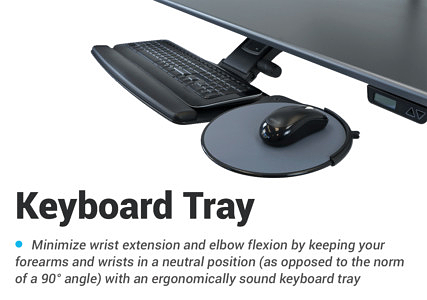
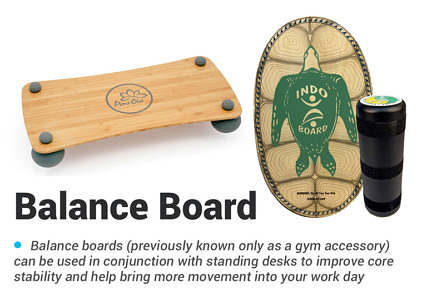
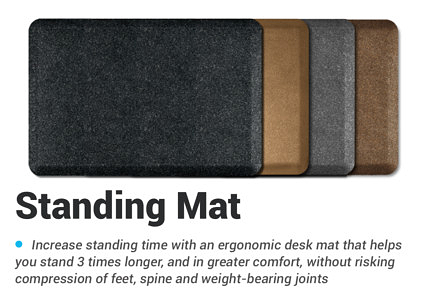
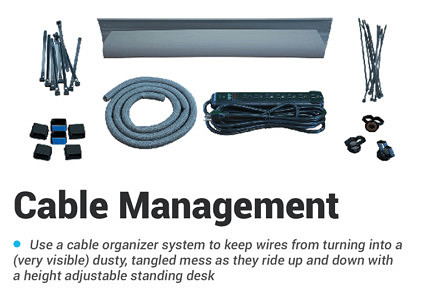
0 Comments
Leave a response >